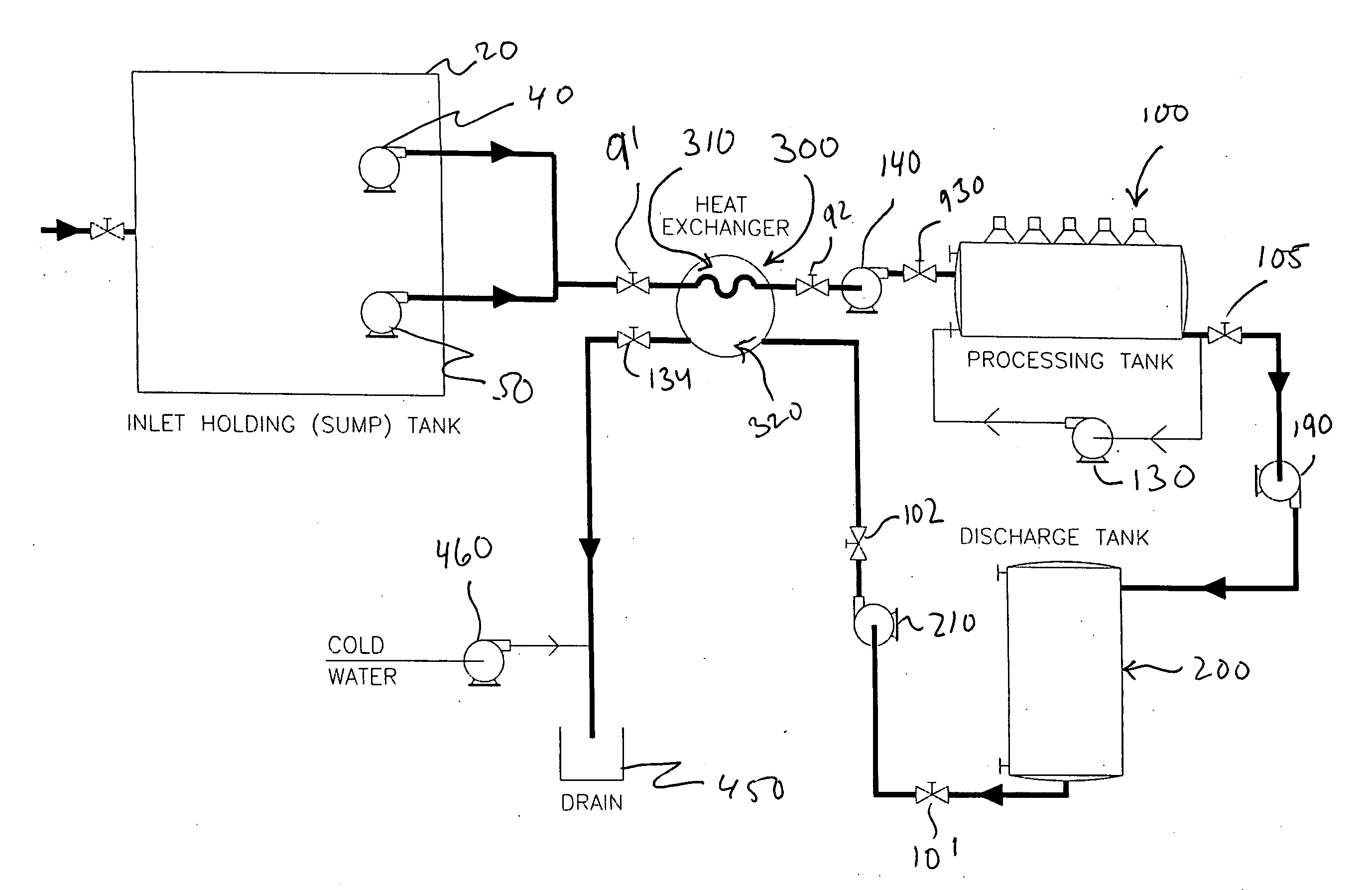Effluent sterilizer system
a technology of effluent sterilizer and waste water, which is applied in the direction of water/sludge/sewage treatment, water treatment parameter control, specific water treatment objectives, etc., can solve the problems of system inability to process liquid and solid waste, waste materials that cannot be moved off-site for treatment, and large energy consumption, so as to achieve maximum energy efficiency
- Summary
- Abstract
- Description
- Claims
- Application Information
AI Technical Summary
Benefits of technology
Problems solved by technology
Method used
Image
Examples
Embodiment Construction
[0015] The present invention provides for the treatment of all waste including solid waste present in ordinary sewage. The sewage is ground by grinder pumps into particles less than a quarter inch in diameter. The ground sewage passes through a heat exchanger designed to accommodate this particle size in a waste stream. One particular use of the invention is in treating laboratory sewage where the effluent must be sterilized.
[0016] According to the preferred embodiment shown in FIGS. 1-5, the system contains five main groups of equipment: a processing tank subsystem, an auxiliary skid (which includes a heat exchanger 300, a discharge tank 200, an air compressor, instruments and pumps), the electrical / support group, a sump tank group, and a main air compressor and filters. These groups are all linked through a distributed control system, embodied in a programmable logic controller (PLC), that coordinates the functions of all components, to ensure the safe and efficient treatment of ...
PUM
| Property | Measurement | Unit |
|---|---|---|
| temperature sensor | aaaaa | aaaaa |
| temperature | aaaaa | aaaaa |
| temperature | aaaaa | aaaaa |
Abstract
Description
Claims
Application Information
 Login to View More
Login to View More - R&D
- Intellectual Property
- Life Sciences
- Materials
- Tech Scout
- Unparalleled Data Quality
- Higher Quality Content
- 60% Fewer Hallucinations
Browse by: Latest US Patents, China's latest patents, Technical Efficacy Thesaurus, Application Domain, Technology Topic, Popular Technical Reports.
© 2025 PatSnap. All rights reserved.Legal|Privacy policy|Modern Slavery Act Transparency Statement|Sitemap|About US| Contact US: help@patsnap.com



